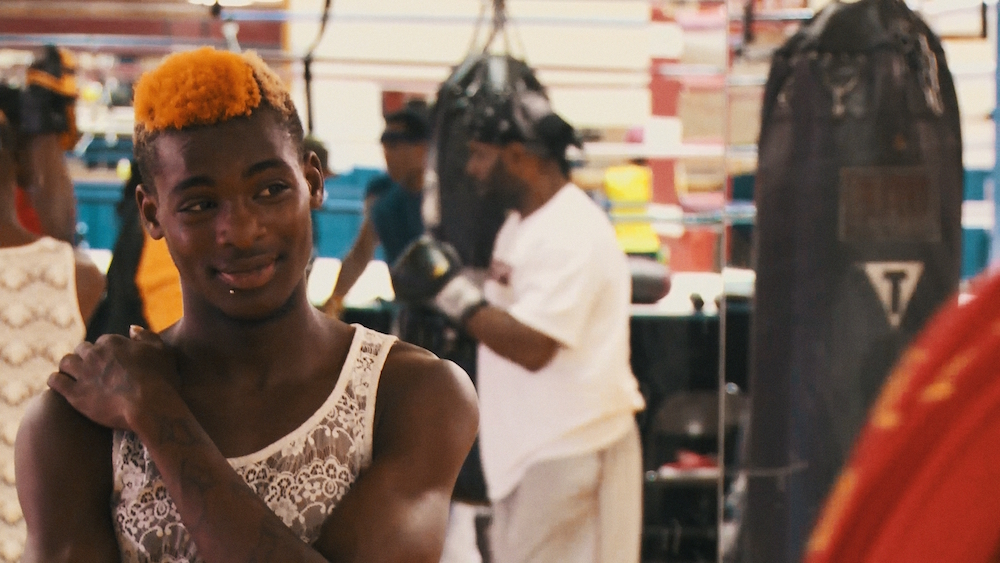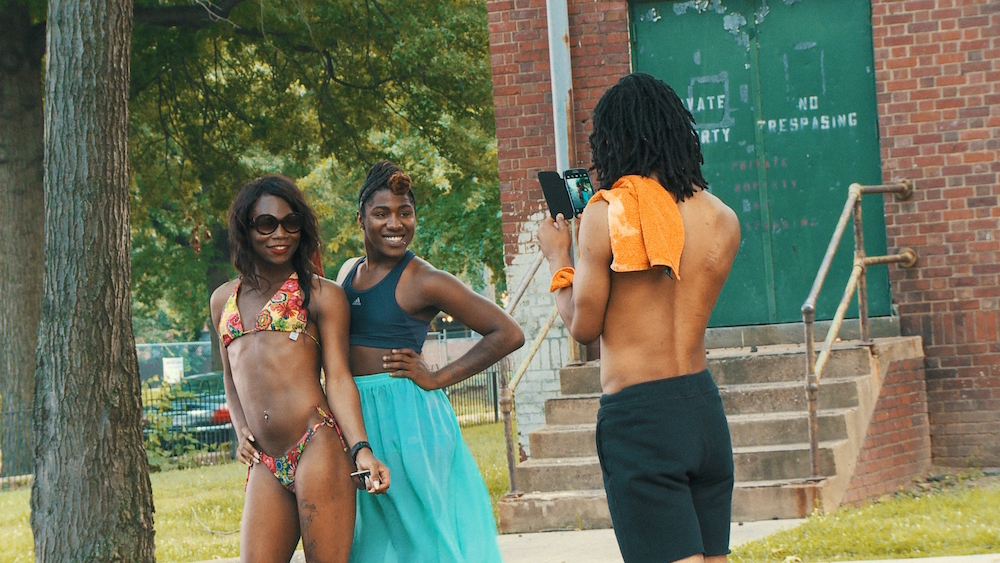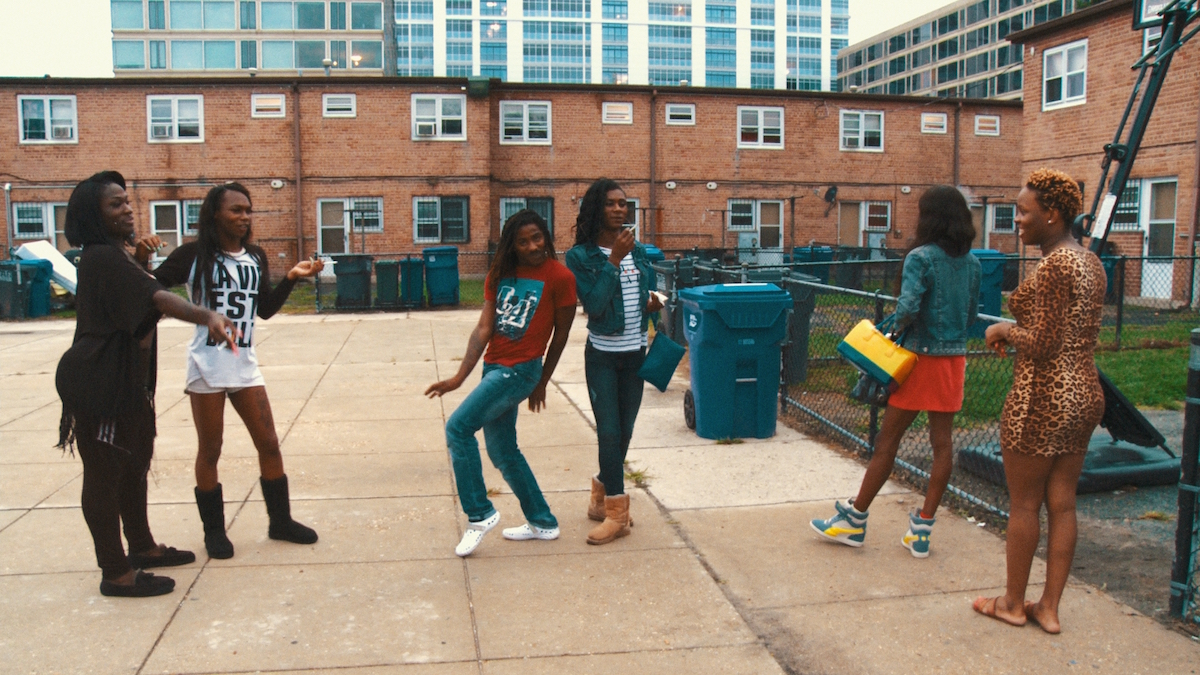The Wikipedia entry for D.C.’s K Street describes it as a “major thoroughfare” known as “a center for numerous think tanks, lobbyists, and advocacy groups.” For a portion of disenfranchised D.C. youth, it’s also where juvenile prostitution is turned to for income. Similarly, the neighborhood surrounding the White House is emblematic not of history and hope but of rampant gang violence. A new crowd-funded documentary premiering at Tribeca Film Festival this week has given visibility and a voice to the Check It, a gang of LGBT African-American 14 to 22-year-olds who are literally fighting to survive in a system that’s designed to beat them down. Its young stars Tray, Day Day, Alton Star, and Skittles find an unlikely avenue through which they’re finally starting to break the cycle: fashion. Every summer, a local fashion show producer hosts a camp for D.C. kids to learn about the industry, and via this camp the members of Check It claw their way backstage at New York Fashion Week.
Filmmakers Dana Flor and Toby Oppenheimer spent three years with the marginalized gang that was formed over a decade ago by a group of bullied ninth graders sick of being picked on. Like many gangs, the Check It have sartorial signifiers that set them apart from the rest of their community. But Louis Vuitton handbags and stiletto heels connote different things on the city’s queer black youth than they do in its mega-million-dollar CityCenterDC development. “Just being black, you have a lot of odds against you,” says Ronald “Mo” Moten, a convict-turned-mentor who is one of the few people invested in helping these kids. “Being gay and black? That’s a whole different ball game.” Self-expression in these streets is indivisible from risking your life. And while the nation’s capital provides a pertinent backdrop, the struggles of this unacknowledged subculture highlights gaping holes that exist all over the country.
We talked to Dana, Toby, Mo, and the members of the Check It themselves about trust, politics, and why fashion offered hope when even the LGBT community didn’t.

How did you find about the Check It?
Dana: We worked on a film that aired on HBO called The Nine Lives of Marion Barry, about the ex-mayor of Washington D.C., so we spent years on the streets of D.C. in the poorer neighborhoods. We were also working on another documentary about go-go music, which is an indigenous genre of music in D.C. That’s how I met Mo, because Mo has his fingers in a lot of different pots, and he’s into go-go music. He was like, “Okay, that’s great, the go-go documentary is going to be fabulous, but you have to meet these kids.” Then I called Toby and he came down — I live in D.C., he lives in New York — we sat down at Denny’s and that’s where it all started. We immediately knew that these guys were the most amazing people that we had ever met.
Was the Check It excited to be given this level of visibility or skeptical of someone putting a camera into their lives?
Tray: I didn’t want to do it at first. We were already in the public eye anyway, and I didn’t want that part of my life to be world-renowned. They had to work their way in. It wasn’t easy. They gained our trust. It was a road that they had to go down, and they passed the test. For me [the deciding factor] was my mother. Before my mother passed away, I didn’t want to do it. But my mother said, “If you want to do it, then do it.” So I thought about it, and then I went ahead and did it, because she really wanted me to do it.
Why was fashion the thing that eventually offered the Check It a chance to escape?
Mo: They needed something they were interested in to get away from a lot of the negative things, and a lot of the things they had to do to survive — taking care of their siblings, having clothes and food. It was an outlet, and it was also a way to heal and tell their story. Fashion was a perfect match for them. Nobody in the city had utilized it to help them, or thought of it before this. I think everybody has something they want to do. A lot of guys we know take it to the studio — you give them tracks and a beat and you can keep them off the street all night. We utilize the fashion show and their talents to touch people in the community.

The film really points out a lot of flaws in the entire American welfare system. Though the D.C. setting feels very pertinent because these kids are hanging out literally blocks from the White House. How big is the disconnect between what’s happening at street level and the pro/anti-LGBT laws that are being pushed by the nation’s leaders?
Tray: I just stay away from things that don’t make sense to me, and a lot of the laws and stuff that they make — sometimes it just doesn’t make sense. So I just leave it as what it is. I think a lot of people, they just go with the flow. They hear “gay marriage,” and they’re like, “Ooh, that’s so good.” But they don’t always think more than that. And just because you’re gay doesn’t mean you have to agree with everything they pass. What might be good for you might not be good for me just because it’s for gay people.
How big is the disconnect between the Check It and the rest of the LGBT community in D.C.?
Mo: When we did the fashion show, we reached out to different people from the LGBT community. In D.C., nobody wanted to touch them, or knew how to get to them. Not because they were terribly bad, but they’d been through a lot and nobody ever gave them the opportunity to change. It’s something that America needs to look at because we have more and more gay people in America. And your sexual preference does not dictate whether you’ll be violent or do bad things — your circumstances do. If you go to places like Philly, New York, or Atlanta, you’re going to have the same things. It reminds me of HIV/AIDS initially, when the black people with HIV/AIDS were getting different treatment. Dealing with gay people is different to dealing with straight people — they have different issues, and they often don’t have the same support. They need to trust you to open up to start the process of healing.
What do you want kids who see the film to leave the theatre thinking about?
Tray: I just want people to see our movie, and just learn from it. What we went through? You don’t have to go through. You don’t have to do the things that we did to survive — there is a way out. And you can make it different. I don’t want people to see it and think that they have to do what we did to survive.
Mo: I think it’s important to get out that there’s a group of people that people forgot about. There are a lot of gangs in the LGBT community, so a lot of people get happy and comfortable, but there are some people you are leaving behind. We’ve seen it happen in other communities, but this shouldn’t happen in the LGBT community. We shouldn’t forget about them. We need to pull them up and utilize their talents and strengths. Other people got help when they went through [hard times] — they didn’t. There’s a lot of pain there, so we’ve got to go back and reach those people.

Credits
Text Hannah Ongley
Photography Toby Oppenheimer
